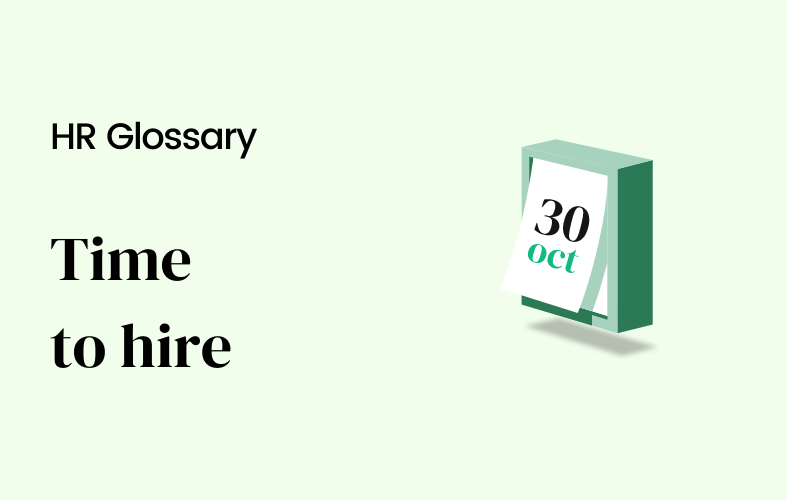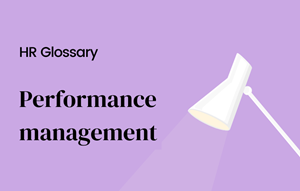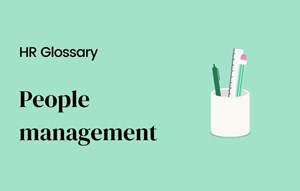Time to hire

[Sommaire]
What is time to hire?
Time to hire is the amount of time between a candidate first making contact with a company - by applying for a job or being approached directly - and that candidate accepting a job offer with the same company.
You can calculate time to hire for each role. However, it can also be interesting to view time to hire as an average of several new hires.
A slow time to hire isn't just bad for the employer; it can be bad for the candidate too. Long periods without any contact from the organization and a longer-than-necessary process can leave potential employees feeling as if they aren’t being considered for the job. They will be more likely to take other jobs offered to them or may start off with a poor impression of the company.
What is the difference between time to hire and time to fill?
Although the time to fill sounds similar to time to hire, they are distinct ideas.
Time to hire relates to the employee’s experience and the length of time that falls between an employee’s first contact with a company and their subsequent acceptance of the job offer.
In comparison, time to fill focuses on the amount of time between agreeing on the need for a new hire internally. It gives managers an idea of the lead time involved in hiring new employees.
Is time to hire important?
Yes, time to hire has several implications that are relevant for both employers and employees. Time to fill is vital because it provides a time frame that can be used as a hire metric to measure turnover and recruitment time.
Both time to hire and time to fill are good indicators for measuring the health of an organization’s hiring process. It takes time for new employees to settle in, so long time frames between application and employment signal an issue within the company or with its recruiting process.
An inordinate time to hire can impact the quality and the organization’s hiring process. For example, time-to-hire that is too long may lead to each new employee missing important training or orientation sessions.
A slow time to hire will also affect workplace morale if the job candidate is waiting months before being hired.
If the time to hire is too long, it may also impact the average time to fill metric, or if it is for a particular role that is longer than time-to-fill, this indicates that employees are leaving before being replaced.
What are the causes of time to hire?
There are several reasons why the time to hire metric can be used by weeks or months instead of days:
- Time taken by the recruiting team to advertise a role.
- Time to review CVs when the candidate applies before making a job offer.
- Time taken for an interview process, whether this is one or several meetings.
- Average time between different stages of the interview process.
Stages of time to hire
During the time to hire, three key stages could be identified:
1. Initial contact
An applicant tracking system measures the time between a candidate first making contact with a company and submitting their application to the hiring team. This time may include the time taken for an initial call screening round or the time spent trying to secure an interview.
2. Application review
The time between an application being submitted and the recruiting team reviewing it.
3. The interview
Time before an offer is extended to a candidate who has successfully completed the hiring process (which includes the time required for assessing references, time taken by interviewing panel members to reach their decision on whom to hire by using some specific recruitment metrics, etc.).
How to improve time to hire?
A company can take several steps to improve its average time to hire.
These include:
Developing a structured recruitment process
By establishing a clear set of steps and establishing benchmarks and targets, you can speed up your time to hire. Without these parameters, the hiring process can drag on.
When you mobilize all your recruitment efforts and have a clear process, this can also help inexperienced managers understand the recruitment process more quickly, helping reduce pressure on HR who would otherwise need to hand-hold the manager through the process.
Investing in Applicant Tracking Software (ATS)
ATS can help reduce the time to hire by removing the administration involved in recruitment. Automating repetitive work such as reviewing applications and CVs saves time and can make it easier to identify potential star candidates more quickly. An ATS can also automate tasks such as contacting candidates for interview dates.
Some companies are using AI software for every job opening to identify potential candidates, which helps remove some of the bias that exists in hiring teams. This way, during your hiring process, you can hire based on skills, experience, and your hire metric rather than whether or not an individual would fit into your team or company culture.
Using technology to screen candidates
By using HR tech for standard assessments and screening interviews, you can cut the time to hire by several days. Instead of wasting time on personality tests and cultural fit questionnaires, you can ask candidates to complete these tests remotely before inviting them to a screening interview.
This time savings can then be used to prepare for the interview, hiring processessearch for suitable candidates, and get them screened faster. You can also use the time saved on screening interviews to talk to more candidates during your .
Regular feedback to employees
After a new job opening, if you are unable to provide regular feedback, this time will be filled with uncertainty for the employee. They will be wondering if they still have a job and are unable to work towards their next employer, which can impact time-to-hire time.
Regular feedback is not just about informing whether or not the employee has been successful in being hired. It allows you to provide regular updates from recruiting teams, as well as allow employees to ask questions.
If an interview process is taking too long or they feel that they are being ignored, then the time to hire time may be extended even longer than necessary because employees will spend time worrying about their future.
Build a talent pool
Having a talent pool from which to select candidates can improve the time to hire. Because these candidates have already expressed interest in working for you, the process can be faster.
You can speed up the process even more by pre-classifying individuals in your talent pool by qualification, skill, and work experience, also by defining your recruitment metrics. This way, you can directly contact relevant individuals and save on the initial information gathering, which can take up so much time.
Consider the employee experience during recruitment
Candidates who are uncertain about a company’s culture will be uncertain about working at that company. By presenting a clear and positive image of your company culture during recruitment, you allay those fears and help speed the process up from the candidate’s perspective.
Ways of doing this include clear, relevant information on the careers page of your website, setting up Q&A sessions with existing (peer level) employees, and giving them a tour of your facilities after the candidate accepts.
What time to hire is right for your business?
The time to hire time depends on the industry that the company operates in. If you need someone to start working as soon as possible, then your hiring process needs to be short. However, if you are hiring for specialized roles, the time to fill will need to be longer.
The time to hire is the time taken from the initial time a potential employee began their search for a new job, right up to accepting an offer. In modern organizations, time to fill still has an important role in communication and problem-solving because it gives managers the average time that has been agreed upon with other parts of the business.
If the average time to hire is long, this may suggest that there are problems with the recruitment process. It also means that a company is potentially losing good employees to competitors, or it can be seen as a sign that a business has developed a poor reputation according to your recruiting metrics for hiring highly qualified candidates.
The average time to hire time depends on each business and how urgently roles need to be filled.
However, time to hire time should be as short as possible, and hiring managers need to consider time wasters like unnecessary meetings and time spent on getting the job description right.
If the time to hire is long, there may also be a lack of clarity about the process or a problem with engagement throughout the recruitment cycle.
What is the average time to hire?
According to a recent SHRM survey, time-to-fill varies from one industry to the next. In technology, time to fill is 40% faster than average, and in manufacturing, time to fill is 50% slower than average.
The time it takes to hire depends on several factors: how many applicants there are for each job, the time of year, whether or not there are more jobs to fill than usual, and so on. The time-to-hire time is also affected by the time it takes for the whole recruitment process, which includes the time taken for sourcing applicants, screening them, and interviewing them.
The time it takes to hire generally increases in some industries during the holiday season. The survey also found that time-to-hire time was lower for companies who had just sponsored refugee employees; time to hire time for those was an average of 45 days.
LinkedIn found that the average time to hire varied from less than a month to as much as four months.
Do not forget there is a time and process associated with hiring managers as well, so if the time to hire seems slow, it may be that your hiring manager needs more time or assistance throughout the process.


